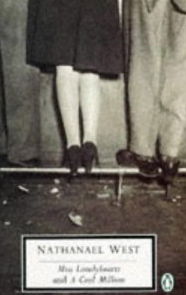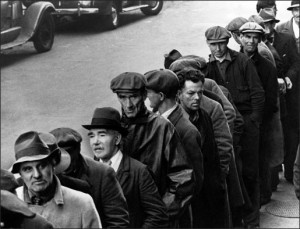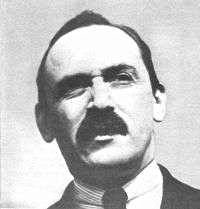“Christ: the Miss Lonelyhearts of Miss Lonelyhearts.”
“Miss L onelyhearts” is the 26-year-old son of a Baptist preacher, working in New York in 1933 as the writer of a gossip column. A sensitive person, he reads thirty or so traumatic letters from readers every day, ranging from women with too many children and abusive husbands, to people who have no idea where their next meal will come from, and he must offer some sort of hope to each one. Shrike, a features editor, is his antithesis, a nihilist who mocks Miss Lonelyhearts’s Christian faith, every other philosophy which might offer hope, and Miss Lonelyhearts’s every attempt to escape from the sadness of his life.Sex and alcohol do not help, and Miss Lonelyhearts gradually descends into obsessive behavior, hypochondria, and religious fanaticism while still trying to help his readers, several of whom he meets in person.
onelyhearts” is the 26-year-old son of a Baptist preacher, working in New York in 1933 as the writer of a gossip column. A sensitive person, he reads thirty or so traumatic letters from readers every day, ranging from women with too many children and abusive husbands, to people who have no idea where their next meal will come from, and he must offer some sort of hope to each one. Shrike, a features editor, is his antithesis, a nihilist who mocks Miss Lonelyhearts’s Christian faith, every other philosophy which might offer hope, and Miss Lonelyhearts’s every attempt to escape from the sadness of his life.Sex and alcohol do not help, and Miss Lonelyhearts gradually descends into obsessive behavior, hypochondria, and religious fanaticism while still trying to help his readers, several of whom he meets in person.
Though the novel is often described as having dark humor, its emotional power is so overwhelming that few people will find much to laugh about here. Shrike, whose name is both satiric and symbolic (shrikes are birds which impale their prey on thorns, much as a butcher hangs meat on a hook), is bent on destroying Miss Lonelyhearts and what he represents (the search for hope), and at a party Shrike has all the guests read aloud and mock the letters from Miss Lonelyhearts’s desk–about paralyzed children, a teenager without a nose, suicidal mothers, and exhausted caregivers.
Tautly constructed with overlapping motifs and symbols, the novel is firmly rooted in the Depression and the edge-of-disaster lives of ordinary Americans. As Miss Lonelyhearts becomes drawn into his readers’ heart-rending problems, he tries to become a rock, emotionally and symbolically, and as he examines the sadness around him, he also begins to think that God has sent him to perform the kinds of miracles that God performs. West’s satiric attitude toward religion here and the use of Miss Lonelyhearts as a Christ-figure, filled with agony and passion, also suggest some sort of satiric Christian martyrdom, but the ending, when it comes, is shocking and unexpected.
 Obviously emotional and filled with cynicism and despair, the novel is the consummate example of Depression literature, firmly establishing the attitudes and philosophies that prevailed as people tried to deal with events so overwhelming that no philosophy, other than nihilism, could fully explain them. West’s focus on themes and philosophies and the symbols which illuminate them prevents this brilliant but often heart-rending novel from descending into melodrama and pathos.
Obviously emotional and filled with cynicism and despair, the novel is the consummate example of Depression literature, firmly establishing the attitudes and philosophies that prevailed as people tried to deal with events so overwhelming that no philosophy, other than nihilism, could fully explain them. West’s focus on themes and philosophies and the symbols which illuminate them prevents this brilliant but often heart-rending novel from descending into melodrama and pathos.
Photos, in order: The author’s photo appears on http://www.nndb.com/people/679/000112343/
“Job hunters line up outside Newark City Hall in New Jersey on April 3, 1935, to apply for a chance to wield pick and shovel 10 hours a day for $4 to excavate the City Canal Railway.” Photo and quotation from http://www.edweek.org/ew/articles/2009

